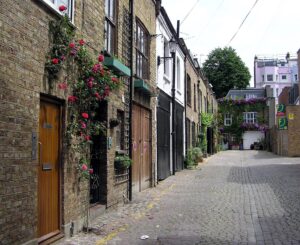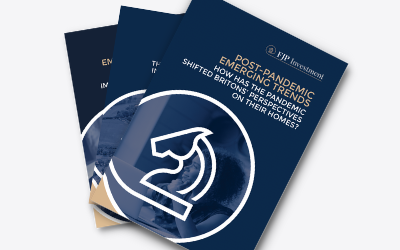Choosing the Right Neighbourhood to Live In
Picking where to live in the UK is a big decision. It’s not just about finding a house or flat. The neighbourhood you choose shapes your day-to-day life. It affects how easy things are, how safe you feel, and even your budget. In 2025, with house prices averaging £290,000, getting it right matters. A good area makes everything smoother. A bad one can leave you wishing you’d chosen differently. This guide keeps it simple and clear for UK residents. We’ll go through the steps to find a place that fits. Let’s get into it.
Step 1: Know What You Need
Start by thinking about your lifestyle. What’s essential for you? Families might put schools at the top. Commuters will want transport nearby. Some prefer quiet over bustle. In 2025, lots of people work from home part-time, so decent internet’s a factor. List what you can’t do without. It’s not complicated—just a way to focus your search. Keep it practical and tailored to how you live.
Budget: Setting the Scene
Your money decides where you can look. Prices across the UK vary a lot. London’s steep—averaging £550,000 for a home. Places like Manchester are closer to £180,000. Work out what you can manage. If buying, banks lend three to four times your yearly pay. A £35,000 salary gets you £105,000 to £140,000, plus a deposit. Renters face £1,300 a month on average. Online maps show costs by area. Pick a few spots that match your funds.
Step 2: Check Transport Options
Getting around is a key piece. Trains, buses, or good roads make a difference. In 2025, rail networks are growing, though fares are up a bit. Look online—how long to work or town? Cities like Leeds have solid public transport. Smaller places might mean driving’s a must. Pop by and try the routes. It’s a straightforward way to see if it works for you.
Schools: A Boost for Families
Schools are a big deal for some. Good ones can push property prices up—sometimes by 10%. You can find ratings online for free. Aim for schools within a mile or two. Areas with parks or kid-friendly spots are a plus. Even if kids aren’t in the plan, top schools help when selling later. It’s a practical perk to keep in mind.
Step 3: Look at Local Amenities
Having stuff nearby matters. Shops, a doctor, or a cafe can save hassle. In 2025, high streets are picking up with smaller stores. Walk around—are things open and busy? A pharmacy or takeaway close by is handy. It’s all about making life easier. For rentals down the line, these draw people in too. Check what’s there—it’s a good sign of quality.
Safety: Feeling at Ease
You want a safe spot. Crime’s lower in many UK areas, but it’s not even. Online police maps show what’s happening—burglaries, that sort of thing. Suburbs often feel calmer than city centres. Drop by at night—does it seem fine? Safety’s a basic need for peace of mind. It’s worth a proper look to be sure.
Step 4: Get the Area’s Vibe
Every place has a feel to it. Some are full of life—markets, pubs, action. Others are chilled out and quiet. Spend time there—watch how it flows. In 2025, people still value a sense of community. A friendly area can lift your spirits. If renting out later, the vibe needs to suit tenants. Make sure it feels right for your way of living.
Future Growth: Looking Ahead
Think about what’s coming. Areas on the rise can mean better value later. New transport or shops are clues. Council websites list plans—easy to check. In 2025, some northern regions show growth—up 8% last year. Building work hints at progress. A place with a future can pay off over time.
Step 5: Test It Out
Don’t just read about it—visit. Go at different times—morning, evening, weekends. Traffic’s a thing in 2025 with roadworks popping up. Stop at a cafe or park—what’s it like? Try the commute or daily trips. It’s the best way to know if it fits. Seeing it beats guessing every time.
Green Spaces: A Touch of Nature
Parks or greenery are a bonus. The UK’s got plenty—urban parks or rural fields. New homes often skip gardens, so a nearby park helps. A short walk to one’s great. It’s good for relaxing or stretching your legs. Tenants like it too—it adds appeal. Look for some green—it’s a nice lift.
Noise: Keeping It Peaceful
Quiet counts for a lot. Busy roads or nightlife can get loud. Visit when it’s active—listen up. Online info sometimes flags noisy bits. Too much sound can wear you down. For rentals, it’s a turn-off too. A calmer spot usually works better for everyone.
Local Services: Extra Handy Bits
Beyond shops, other services help. A GP or dentist nearby is useful—check online for options. In 2025, some places have NHS waits. Libraries or community spots show care for the area. These little extras make things smoother. They’re a plus for tenants too—worth noting.
Flood Risk: Staying Dry
Weather’s a factor in the UK. Flooding hits some spots—check the risk. Free maps online show flood zones. Areas near rivers can be trickier. It’s not common, but it’s a headache if it happens. Picking a low-risk place avoids trouble down the line.

Community: The People Side
Neighbours set the tone. A friendly area feels better to live in. Watch how folks act—are they chatty? In 2025, community’s still a draw for many. It’s hard to pick who’s next door, but you can sense the mood. A good vibe keeps things pleasant.
Property Trends: What’s Happening
Housing patterns give a heads-up. Are prices steady or going up? Online tools track this by region. In 2025, parts of the North West are steady climbers. A solid market feels secure. A growing one might mean gains later. It’s a quick check for confidence.
Internet: Staying Connected
Good internet’s a must these days. In 2025, fast broadband powers work and downtime. Check coverage online—rural areas can dip. New builds often have better setups. It’s a basic need for most. Tenants expect it too—make sure it’s there.
Walkability: Getting Around on Foot
A walkable spot is a win. Shops or parks a stroll away cut hassle. In 2025, towns are pushing pedestrian zones. Test it—can you skip the car? It’s handy and saves cash. Tenants like it too—it’s a practical edge.
Parking: Space for Wheels
If you drive, parking’s key. Some areas have tight streets or permits. In 2025, new rules limit spaces in cities. Look around—is it easy? No parking can be a pain. It’s a small thing that adds up fast.
Air Quality: Breathing Easy
Clean air’s worth a thought. Cities can get smoggy—rural spots less so. Online maps show air stats. In 2025, urban areas are cleaning up a bit. Better air’s good for health. It’s a quiet bonus to consider.
Conclusion: Your Spot’s Out There
Finding the right neighbourhood takes a bit of care. It’s about what works—transport, schools, safety, the lot. In 2025, the UK’s got options—London’s pricey, but other places shine. List what you need, check it out, see it for yourself. A good pick means a better life there.
ARE YOU READY TO START INVESTING?
Subscribe to our mailing list now for exclusive deals, investment guides and the latest information from the property market.







